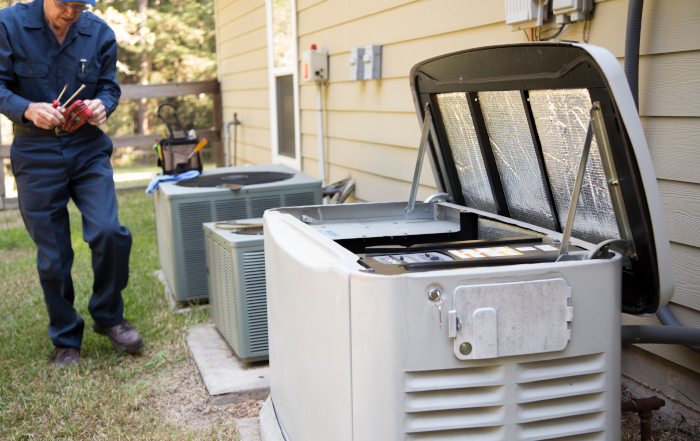Your Generator Installation Checklist
January 7, 2022

Installing a generator is not as simple as installing a common household appliance. A generator install requires more attention, more preparation, and more knowledge than selecting a refrigerator at a local hardware store and opening your front door for the installation team to plug it in. While a professional installation is necessary for generators, you will play an active role in the process. We’re here to walk you through each step, so you know what to expect.
1. Choose the Location
Your generator will need to be in an appropriate location and connected to a fuel source. You will also need to connect your generator to a transfer switch based on the location of your generator, its accessibility, and your home’s wiring.
Use the following list to narrow down the best spot for your generator:
- Code compliant
- Easily accessible for maintenance
- Near your fuel source and electrical connection
- Away from windows, doors, and water sources
- Not blocking utilities
- Clear on every side and above
- Compliant with HOA regulations
2. Obtain Necessary Permits
Before moving forward, learn your town, county, and local government’s requirements for installing a generator. Many Homeowners Associations also have regulations for installing a generator in a residential area. You will be required to obtain specific permits before installation. In most cases, permits will be issued on the same day they are applied for.
3. Pour a Concrete Slab
Your generator needs to stand on a concrete pad to keep it above standing water, and to anchor it in place. This will protect your home (and allow your generator to do its job) during a storm or natural disaster.
4. Connect the Generator
Now your installer will connect the generator to your home or business through a transfer switch. This allows the generator to be incorporated into the current electrical configuration as a secondary source of power. Then, the generator will be connected to a fuel source. If you do not have an existing natural gas line to connect it to, you can easily connect it to a propane tank and receive the same performance.
5. Pass an Inspection
After your generator is hooked-up, your installer will inspect the connections and oil and fuel levels. This is done through an outage simulation that will ensure your generation will work correctly during a power outage.
Zaskoda Repair has skilled technicians who can install your business or home generator in major Texas cities. For more questions about the installation process, or to set up an appointment for a generator installation, contact Zaskoda Repair today.
